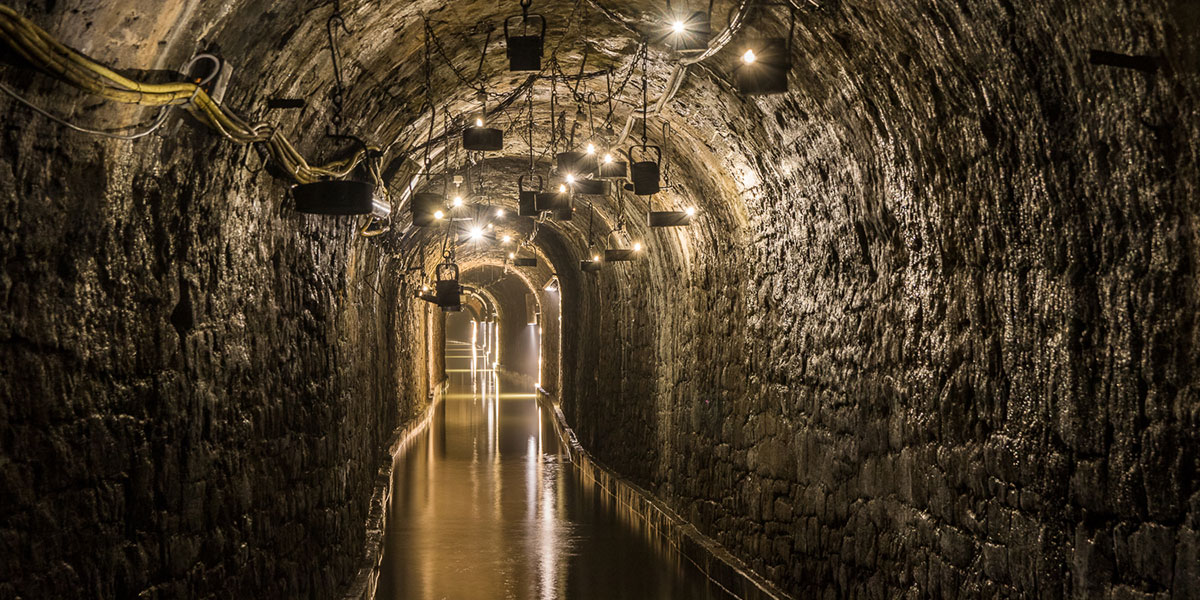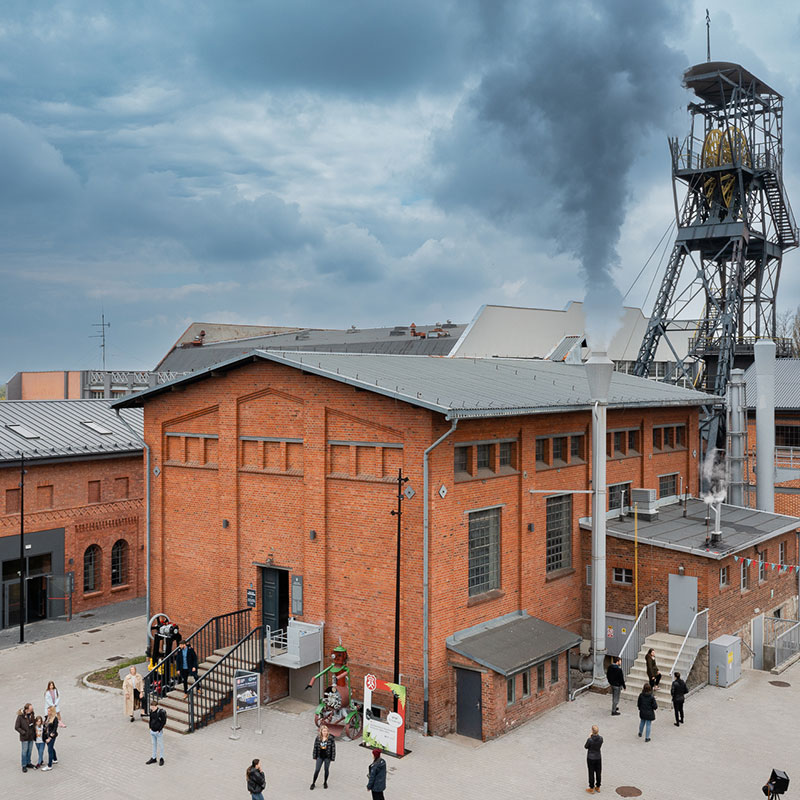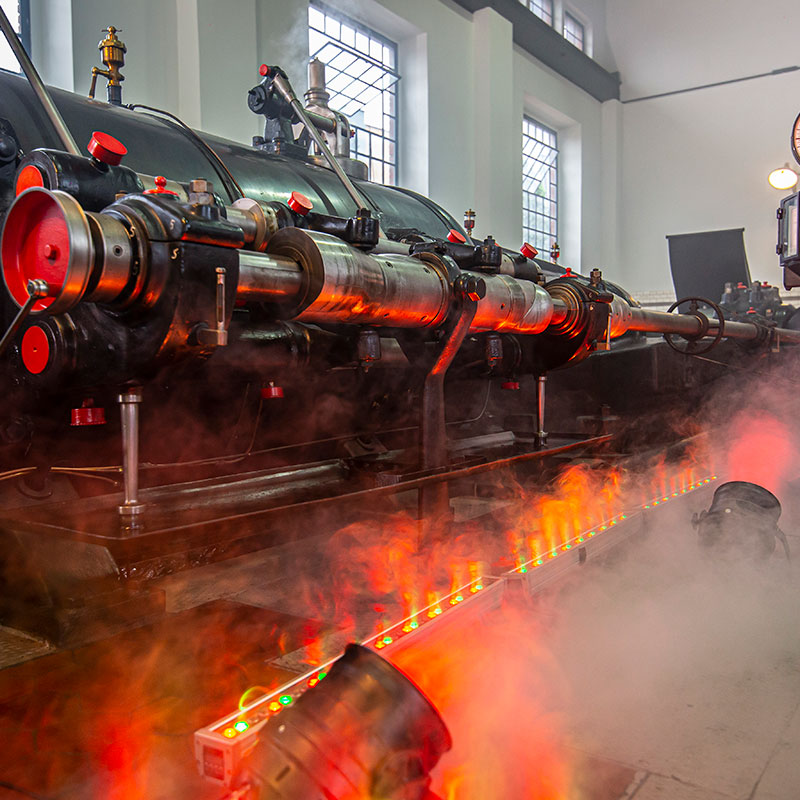Visiting the Królowa Luiza Adit Complex - Tourist Route
This largest tourist complex of above- and underground mining facilities in Poland will be visited by conference participants on Thursday, 25.05.2023.
It was here that the history of heavy industry in Upper Silesia began, when the German director of the Higher Mining Office in Wrocław (Lower Silesia) and later Minister and Count Friedrich Wilhelm von Reden commissioned a search for coal, needed for the development of industrial plants, in 1790. Coal seams were found here, and within a year the first mine in Upper Silesia was operating here (along with its peer, the coal mine at Królewska Huta, now Chorzów). As late as the end of the 18th century, a coal steam engine was installed here and water transport of coal was introduced. At the time, the Królowa Luiza mine was one of the largest and most modern mines in Europe. As late as 1976, it employed 10,000 workers and extracted 6 million tonnes of coal a year. The last tonne went from the mine to the surface in March 1998 after 207 years of uninterrupted operation.....
The first historic building in the complex will be the Chain Bath, which was revitalised 12 years ago and hosts conferences. The building dated from 1890 was the first cloakroom and bathhouse of its kind for miners in Upper Silesia. Today little remains of its former appearance, but it will be just an introduction to the interesting facilities. After the conference, its participants will visit the Carnall Zone, a post-industrial space located next to the Carnall shaft, which was opened for cultural purposes in 2011. In the shaft building, visitors can see a real treat - a demonstration of the operation of a steam hoisting machine from 1915, which permanently operated the Carnall Shaft, 503 metres deep, until 1990. With a power output of 2,000 hp, it allowed the mine lift to be lowered at a speed of 14 metres per second. This is the oldest still operating machine of its kind on the continent.
In the compressor hall and the 6kV switching station, visitors will be able to see interesting exhibitions, such as: the "Uncommon History" exhibition, presenting the history of the Królowa Luiza mine, the "Edison Mine. The history of electrification in the Upper Silesian coal mining industry", or the exhibition "With a mining lamp through the ages", „The history of electrification in the Upper Silesian coal mining industry", or the exhibition "With the Mining Lamp Through the Centuries", located in the former battery building. Finally, there is an exhibition on mine rescue and mine risks.
Then, the group will descend to the underground to admire the historic galleries of the Królowa Luiza Mine, including a unique walkway from the end of the 18th century, carved into a coal seam more than 6 m thick. Visitors will be able to learn about the 200-year history of the development of mining techniques, see the underground water dock with a movable wooden crane and see working mining machines from the 1970s. The largest of these is a colossus called the KBW-3RDU, which weighs 28 tonnes and can mine coal at a rate of up to 10 tonnes per minute. Its two cutting organs, armed with sets of knives capable of cutting through even the hardest rock, are sure to impress. Visitors will also be able to see a cutting machine - a giant saw for cutting coal seams, a single-drum shearer and a longwall planer. The two longwalls open to the public stretch for more than 80 metres. Thanks to multimedia projections, tourists learn more about the miners' work. At the end of the tour of the mine workings, a ride on the Karlik mining train will also be an attraction.
Underground, the Królowa Luiza Mine is connected with the Main Key Hereditary Adit. Its construction began in 1799 and lasted 60 years. It was intended to help drain water from the mines in the Zabrze area and to enable the transport of coal by boat. During its construction, 14 km of underground passageways were dug, leading the adit as far as the Kłodnicki Canal. Water flowed naturally down the adit, and coal was transported by boat, from where it was loaded onto barges in the Canal and sent down the Oder River to Prussia. The adit had been unused for decades and was clogged with accumulated silt. In 2009, the difficult task of unblocking the adit and restoring it to use, this time for tourist purposes, was undertaken. Today, the adit is an underground boat route of more than 1 km under the very centre of the city of Zabrze.





